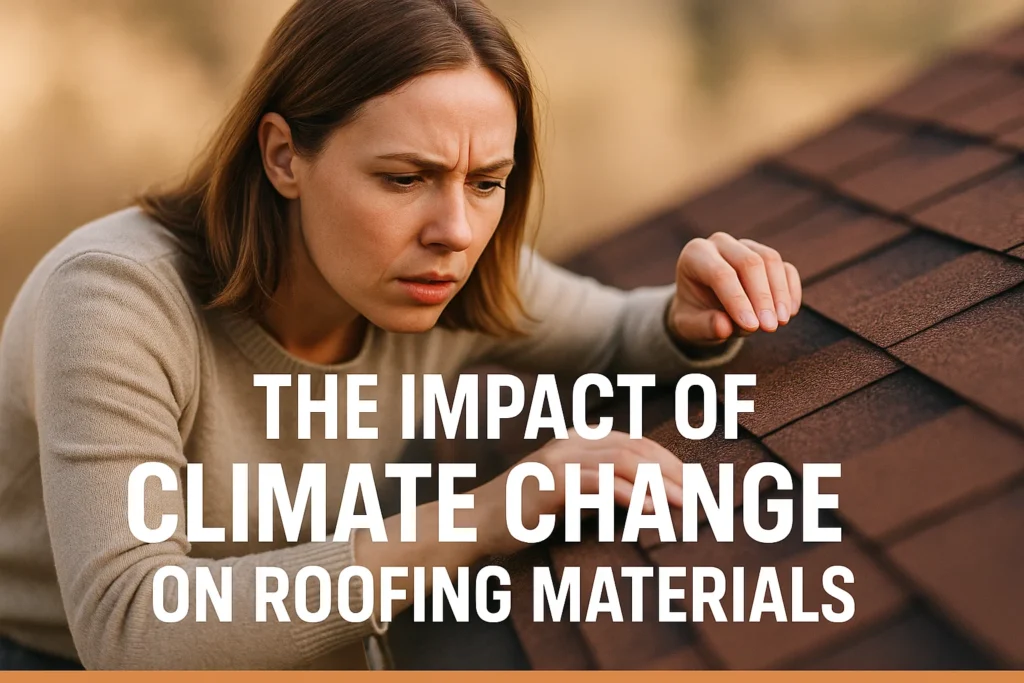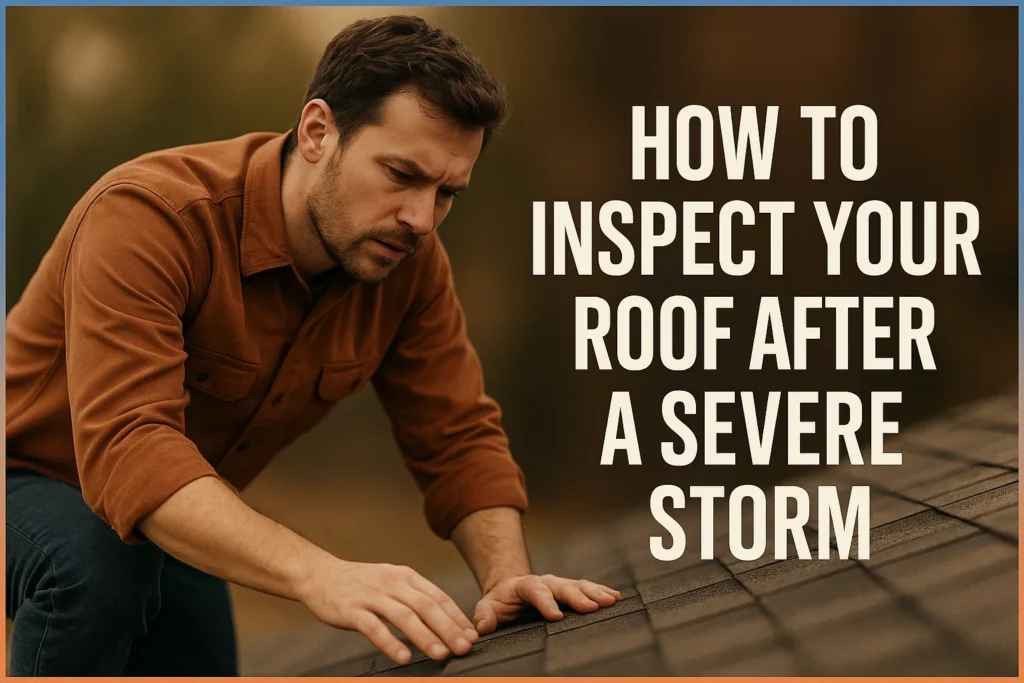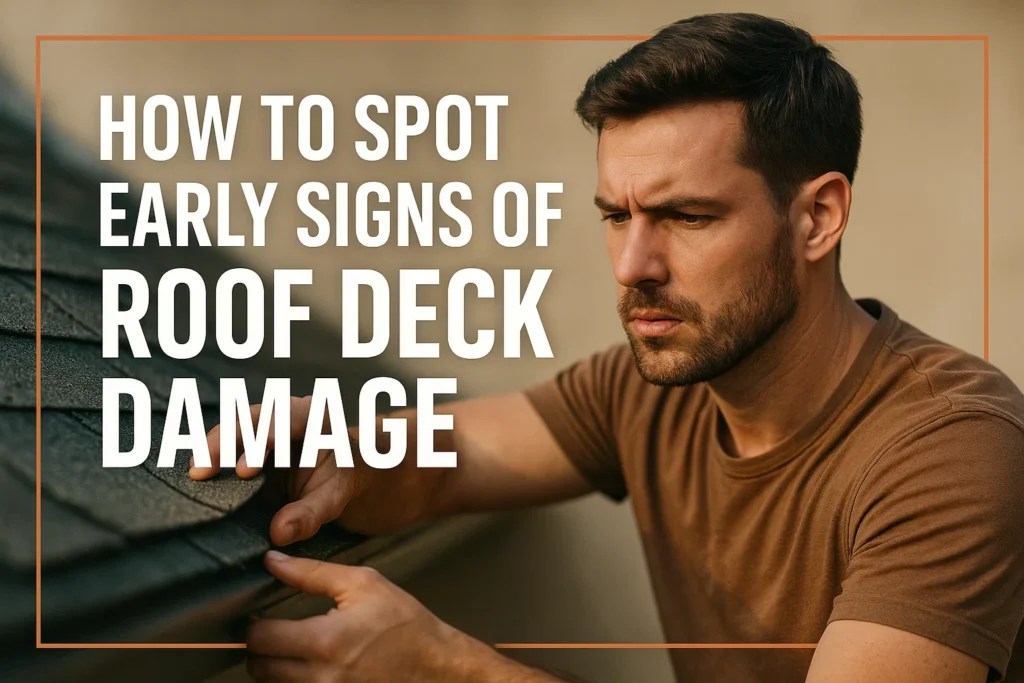Finding out that your new roof is leaking can be shocking and frustrating. You have already spent thousands of dollars on a new roof of your house and now the water is leaking into your house. You are not the first person to have this experience, and there are short-term solutions that you can implement to reduce harm and get the situation fixed as soon as possible. A roof leak does not always mean that you had a poor job done, as it could simply indicate some problems with the installation.
However, the action should be taken as soon as possible. A leaky roof during a heavy rain or a roof vent leak can cost you thousands of dollars in water damage. So, it is worth it to get on it fast and ensure your roofing issues are corrected properly. This blog is a step-by-step guide on what you should do when you have to deal with a new roof leaking.
Why Is My Roof Leaking After Being Newly Installed?
Leaks on new roofs may have a variety of reasons and by identifying the cause, it is possible to know the right way of dealing with them.
Installation Problems
The most frequent problem that causes leaks in new roofs is an installation-related problem. Roof vent pipes that may be used in plumbing are especially prone to leakage when the flashings are not properly installed or have not been installed at all.
Some installers cut the shingles around the vent pipe and caulk the gap, amazingly. This misinstallation may cause a leakage problem instantly.
Flashing Problems
The leakage of the roof around the plumbing vents must be due to a poor job of flashing. According to professional roofers, there is more to flashing than caulking around the pipes. It should be watertight and this is facilitated by metal flashing, rubber boots and effective ways of sealing.
Defects of Material
There are cases where the cause of new roof leaks is defective materials and not poor installation. With the perfect installation, there is the possibility of immediate leakage problems because of broken shingles, poorly designed underlayment, or poor vent boots.
Weather Related Problems
You can install your new roof correctly and still have it fail when there is extreme weather. Design weaknesses or the need to do more weatherproofing to suit the climate conditions in your area may be revealed by new roof leaks during heavy rain.
Settling and Movement
There may be a slight movement of the structure as everything settles when there is new construction or a new roof put on. Such movement would cause the development of tiny cracks or stress points where water penetrates.
Inadequate Ventilation
There should be proper ventilation in the attic to prevent condensation issues, which are similar to roof leaks. When moisture accumulates in your attic area, it may drip down and look like your roof is leaking when, in actuality, it is interior condensation.
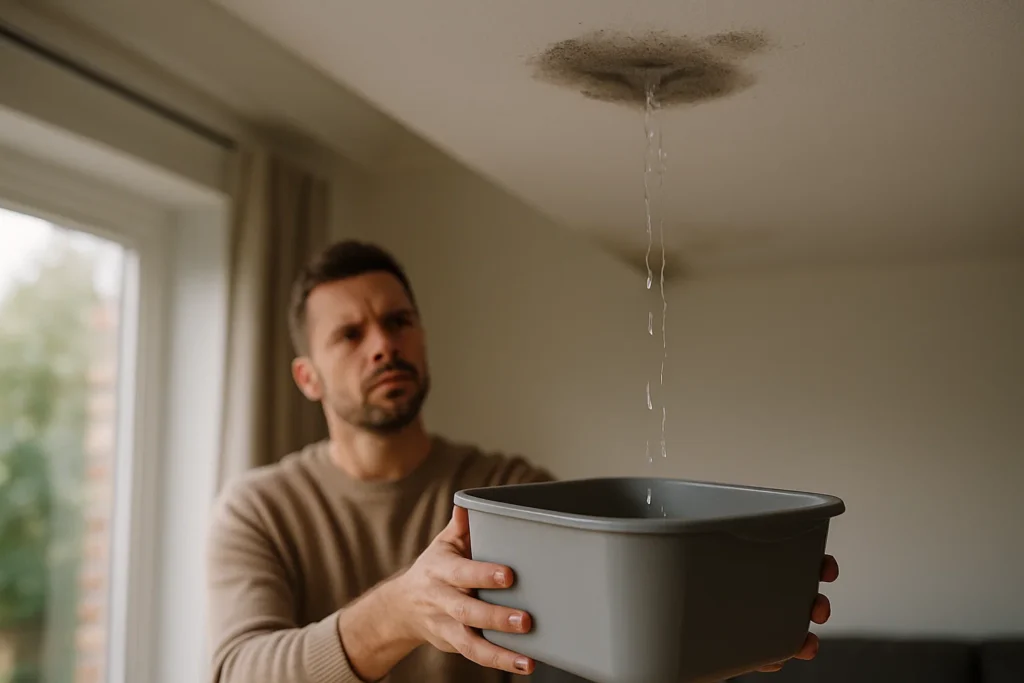
What to Do when Your Roof Is Leaking
As soon as you realize that your roof has a leak, it is vital to take quick action that will help to avoid a lot of water damage.
Step 1: Water Control Step
In case you have a leaking roof, you should attempt to seal it as much as you can. Use grab buckets, garbage cans, towels and whatever you can find to collect the water to minimize the effect and damage that water can cause.
Take furniture, electronics and other valuables out of the vicinity of the leak. Put buckets or containers under dripping water, and put towels or tarps on flooring.
Step 2: Write up
Take photos and videos of the leak, the water damage, and the areas that are affected. Note the date, time and weather conditions under which you found the leak. This will be important to take warranty claims and insurance.
Step 3: Source Searching
Assuming that it is safe to get into your attic, you can attempt to detect the point of entry of water. Bear in mind that water can run along beams and rafters and therefore the source of the leak may be several feet away where the water is actually dripping.
Step 4: Reach out to Your Contractor
Right after successfully controlling the leak, you must contact the roofing contractor who installed your roof right away. When they are a good roofing company, they will come to have a look in the shortest time possible to get a solution.
The majority of professional roofing firms provide guarantees on materials and labour. An established contractor is expected to react fast in repairing new roof leaks, particularly when the installation is a new one.
Step 5: Temporary Repairs
In case your contractor is unable to respond straight away and your leak is serious then you may require temporary measures. Nevertheless, do not climb on your roof in wet conditions. In case you need to effect emergency repairs, cover the leakage area on the outside with tarps that are weighted down.
Step 6: Contact Your Insurance Company:
Call your homeowner insurance and report the leak and the possible water damage. Although the roofing contractor may repair the roof, your insurance may compensate you on interior damages that were occasioned by the leak.
The Cost of Ignoring a Leaking Roof
This is a breakdown of the table of the risks of ignoring a leaking roof, with a breakdown of the estimated costs to fix the corresponding problems. The repair prices are estimated and will vary according to the severity, location and contractor rates.
| Risk | Description | Potential Repair Cost Range |
| Structural Damage | Water infiltration weakens roof decking, rafters, and support, compromising structural integrity. | $1,000 – $10,000+ (depends on extent of damage) |
| Mold and Mildew Growth | Moisture creates ideal conditions for mold/mildew within 24-48 hours, causing health risks. | $500 – $6,000+ (mold remediation and repairs) |
| Insulation Damage | Wet insulation loses effectiveness and may require full replacement. Removal and replacement is costly. | $1,000 – $3,000 (depending on insulation area) |
| Electrical Hazards | Water contacts wiring or fixtures, creating fire or shock hazards needing immediate repair. | $500 – $3,000+ (inspection, rewiring, repairs) |
| Interior Damage | Ceilings, walls, flooring, and belongings suffer water damage, increasing repair/replacement costs. | $1,000 – $10,000+ (varies by damage scope) |
| Warranty Voidance | Delaying repairs may void the roofing warranty, leaving future repairs fully out-of-pocket. | Potentially thousands (loss of warranty coverage) |
The inability to repair a small roof leak can become a nightmare of structural repair, health problems with mold, electric costs, insulation, and the massive interior damage in little to no time. Prompt repair not only saves your house and family but can also save you thousands of dollars spent on damage control in the future. Also, prompt repair of leaks can be necessary to maintain your roofing warranty.
What to Check After Roof Installation to Avoid Leaks
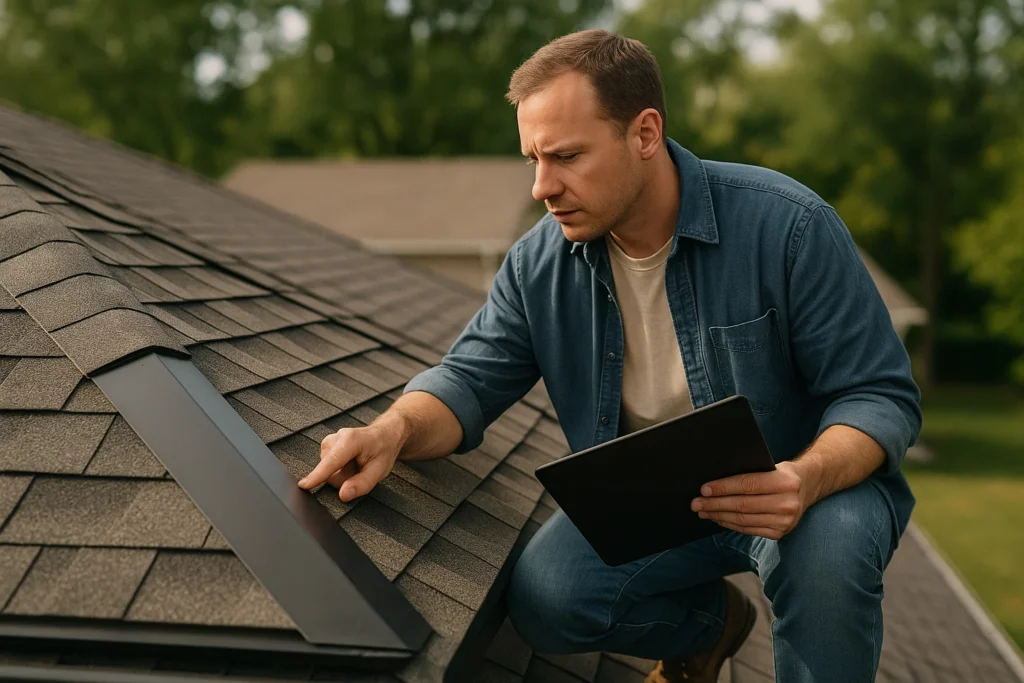
It is always preferable to prevent a leaking roof than to deal with it. This is what you need to check after a new roof installation on your residence.
Flashing Inspection: Inspection of all flashing of chimney, vent, skylight and roof penetrations should be made. There must be proper flashing that is adequately sealed and attached. Check to determine that there is no crack, frayed edge or caulking that seems to be inadequate.
Vent Boot: Check roof vent boots and collars of the plumbing vents. Reasons that lead to leaks on the roof vents are broken flashing, broken vent pipe collars, or improperly sealed seams. Make sure that the pipe penetrations have a good seat and seal.
Shingle Alignment: Take a tour around your house and make an eye inspection on how the shingles are laid. Look at the uneven rows, the shingles that are missing and the ones that do not seem to overlap correctly. The shingles are also to be installed to keep the water out.
Gutter and Drainage: The gutter should be in a good position so that the house can drain. This may lead to poor drainage, whereby water may back up underneath the roofing materials, resulting in a leakage that may seem to be coming out of the roof.
Attic Ventilation: Your attic should be well-vented to ensure that you do not have condensation. Good ventilation will aid in avoiding moisture levels that may lead to issues that are similar to roof leaks.
Edge and Ridge Details: The Edge and ridge and valley of the roofs are put up in the right way. These are the places that can be easily affected by leaks unless they are well sealed and covered.
Conclusion
A leaking roof is undoubtedly stressful, but it is an issue that can be solved and solved fast with the correct approach. The trick is to act fast so that the damage is minimized and to work with your contractor to find the cause and rectify it. Keep in mind that quality roofing contractors will guarantee their work and should be attentive to warranties. In case you are not able to get a response from your original contractor, it is always advisable to consult other qualified individuals.
The majority of new roof leaks can be repaired with little cost, particularly when it is promptly fixed. Regardless of whether you have roof vent leakages, flashing problems, or installation problems, the main thing is to take some action to save your home and your investment as well. At Faver Roofing, we are your roof caretakers. Contact us for detailed roofing services.
FAQs
New roof leaks are usually caused by installation problems like poor flashing around vents, poor sealing, poor materials, and settlement of the structure. Any good contractor should fix these issues under warranty
Move valuables out of the area they are damaged by the leak, move to a higher location so that the water can be contained using the buckets and towels, take photographs as evidence of the damage, and call your roofer. Always avoid risky roof repair by yourself
Roof vent leaks: It is usually necessary to hire a professional to fix the roof vent leaks through replacement of vent flashing or vent boots, or by sealing. The initial procedure in fixing the leakage in a roof vent is to strip off any old sealant or caulk at the bottom of the vent pipe. This ought to be included in your roof warranty
Cover the leak area with tarps that are well weighted down on the outside side and containers placed to capture the water on the inside side and one should never walk on the wet roofing materials. These are temporary measures until one can get the help of a professional.
Bad installation of the roof, bad flashing, bad drainage or inappropriate design can be exposed when there is heavy rain and not during ordinary situations. The additional amount of water overloads the vulnerable spots of the roofing system.




